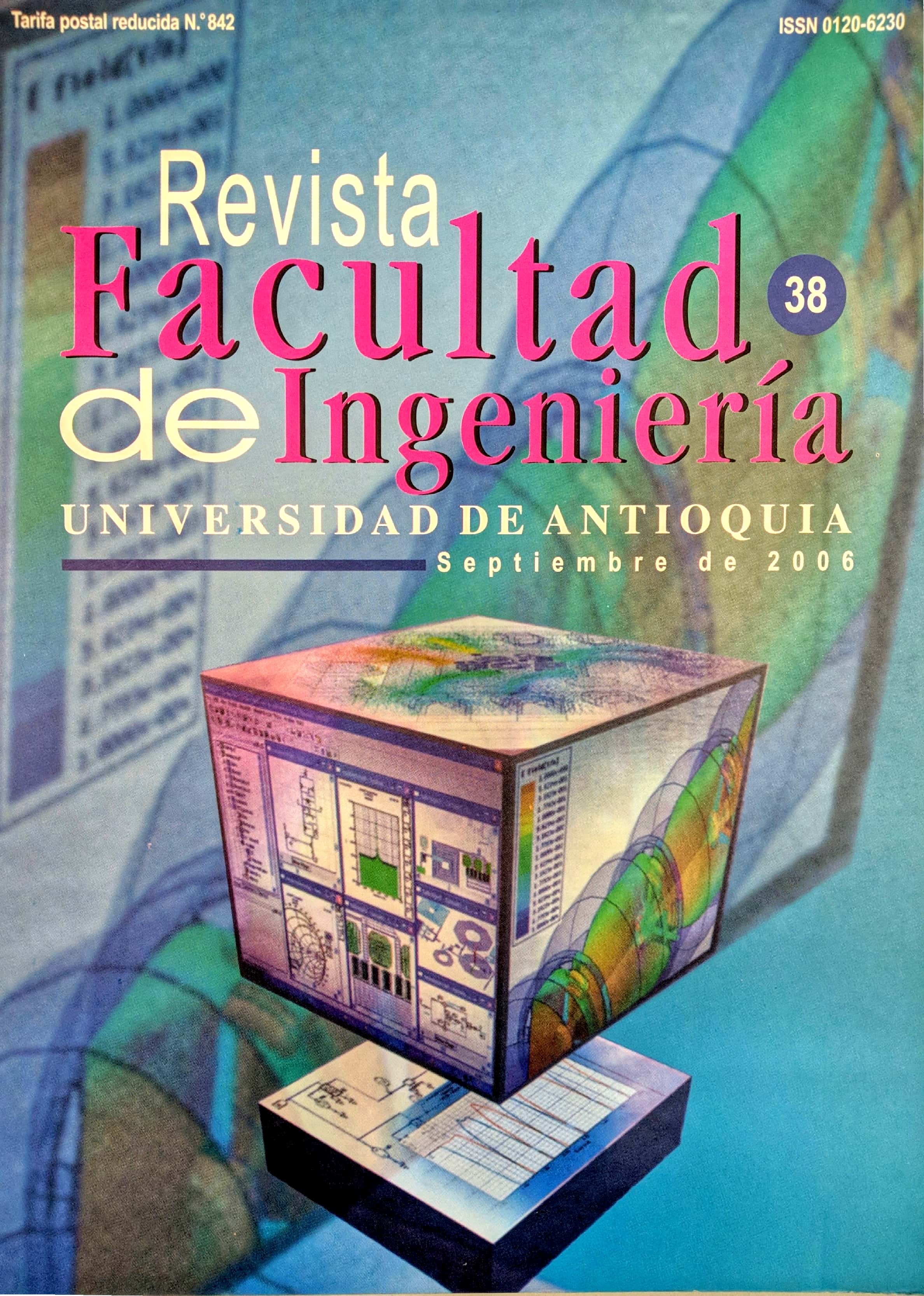Generación dinámica de la topología de una red neuronal artificial del tipo perceptron multicapa
DOI:
https://doi.org/10.17533/udea.redin.343285Palabras clave:
Redes neuronales artificiales, perceptron multicapa, topología, arquitecturaResumen
En este trabajo se aplica un método constructivo aproximado para encontrar arquitecturas de redes neuronales artificiales (RNA) de tipo perceptrón multicapa (PMC). El método se complementa con la técnica de la búsqueda forzada de mejores mínimos locales. El entrenamiento de la red se lleva a cabo a través del algoritmo gradiente descendente básico (GDB); se aplican técnicas como la repetición del entrenamiento y la detención temprana (validación cruzada), para mejorar los resultados. El criterio de evaluación se basa en las habilidades de aprendizaje y de generalización de las arquitecturas generadas específicas de un dominio. Se presentan resultados experimentales con los cuales se demuestra la efectividad del método propuesto y comparan con las arquitecturas halladas por otros métodos.
Descargas
Citas
J, Hilera. Redes Neuronales Artificiales. Fundamentos, modelos y aplicaciones. Alfaomega, MADRID 2000. p. 132-153.
K, Peng. “An algorithm to determine neural network hidden layer size and weight coefficients”. Proceedings of the 15th IEEE International Symposium on Intelligent Control (ISIC 2000). Rio Patras. Greece. 2000.
T. Yau. “Constructive Algorithms for structure learning in feedforward Neural Networks for Regression Problems”. IEEE Transactions on Neural Networks. Vol. XX. 1999. p. 16.
S. Ergeziner, E. Thomsen. “An accelerated learning algorthim for multilayer perceptions: optimization layer by layer”. IEEE Trans Neural Network. Vol 6. 1995. p 31-42. DOI: https://doi.org/10.1109/72.363452
F. M. Coetzee, V. L. Stonik. “Topology and geometry of single hidden layer network least square weight solution”. Neural Comput. Vol. 7. 1995. p 672-705. DOI: https://doi.org/10.1162/neco.1995.7.4.672
L. M. Reynery. “Modified backpropagation algorithm for fast learning in neural networks”. Electron Left. Vol. 26. 1990. p. 10-18. DOI: https://doi.org/10.1049/el:19901004
D. H. Park. “Novel fast training algorithm for multiplayer feedforward neural networks”. Electron. Left. Vol 26. 1992. pp. 1-100.
A. Sperduti. Staria A. “Speed up learning and network optimization with extended bacpropagation”. Neural Network, Vol 6. 1993. pp. 365-383. DOI: https://doi.org/10.1016/0893-6080(93)90004-G
T. Ash. “Dynamic node creation in back propagation networks”. Proceedings of Int. Conf. On Neural Networks. San Diego. 1989. pp. 365-375. DOI: https://doi.org/10.1080/09540098908915647
H. Hirose. “Back-propagation algorithm with varies the number of hidden units”. Neural Networks. Vol. 4, 1991. pp. 20-60. DOI: https://doi.org/10.1016/0893-6080(91)90032-Z
S. Aylward, R. Anders. “An algorithm for neural network architecture generation”. A1AAA Computing in Aerospace VIII. Baltimore, 1991. p 30-90. DOI: https://doi.org/10.2514/6.1991-3756
R. Tauel. Neural network with dynamically adaptable neurons. N94-29756, 1994. pp. 1-12
T. Masters, “Practical Neural Networks recipes in C++”. Ed. Academic Press, Inc. 1993. pp. 173-180. DOI: https://doi.org/10.1016/B978-0-08-051433-8.50015-X
X. Yao, “Evolving Artificial Neural Networks. School of Computer Science”. Proceedings IEEE. Septiembre, 1999.
E. Fiesler. “Comparative Bibliography of Ontogenic Neural Networks”. Proccedings of the International Conference on Artificial Neural Networks, ICANN 1994. DOI: https://doi.org/10.1007/978-1-4471-2097-1_188
N. Murata, “Network Information Criterion-Determining the number oh hidden units for an Artificial Neural Network Model”. IEEE Trans. on Neural Networks. Vol. 5. 1994. DOI: https://doi.org/10.1109/72.329683
B. Martín del Brio, Redes Neuronales y Sistemas Difusos. AlfaOmega. 2002. pp. 64-66, 69.
V. Kurková. “Kolmogorov´s theorem and multiplayer neural networks”. Neural Networks. Vol. 5. 1992. pp. 501-506. DOI: https://doi.org/10.1016/0893-6080(92)90012-8
L. Prechelt. “Early Stopping – But When?”. Neural Networks: Tricks of the Trade. 1998. pp. 55-70. DOI: https://doi.org/10.1007/3-540-49430-8_3
D. Hush, B. Horner. “Progress in supervised neural networks: What´s new since Lipmman?”. IEEE Signal Proc. Mag., 1993. DOI: https://doi.org/10.1109/79.180705
L. Hwang, M. Maechler, S. Schimert, “Progression modeling in back-propagation and projection pursuit learning”. IEEE Transactions on Neural Networks. Vol. 5. 1994. pp. 342-353. DOI: https://doi.org/10.1109/72.286906
Descargas
Publicado
Cómo citar
Número
Sección
Licencia
Los artículos disponibles en la Revista Facultad de Ingeniería, Universidad de Antioquia están bajo la licencia Creative Commons Attribution BY-NC-SA 4.0.
Eres libre de:
Compartir — copiar y redistribuir el material en cualquier medio o formato
Adaptar : remezclar, transformar y construir sobre el material.
Bajo los siguientes términos:
Reconocimiento : debe otorgar el crédito correspondiente , proporcionar un enlace a la licencia e indicar si se realizaron cambios . Puede hacerlo de cualquier manera razonable, pero no de ninguna manera que sugiera que el licenciante lo respalda a usted o su uso.
No comercial : no puede utilizar el material con fines comerciales .
Compartir igual : si remezcla, transforma o construye a partir del material, debe distribuir sus contribuciones bajo la misma licencia que el original.
El material publicado por la revista puede ser distribuido, copiado y exhibido por terceros si se dan los respectivos créditos a la revista, sin ningún costo. No se puede obtener ningún beneficio comercial y las obras derivadas tienen que estar bajo los mismos términos de licencia que el trabajo original.










 Twitter
Twitter